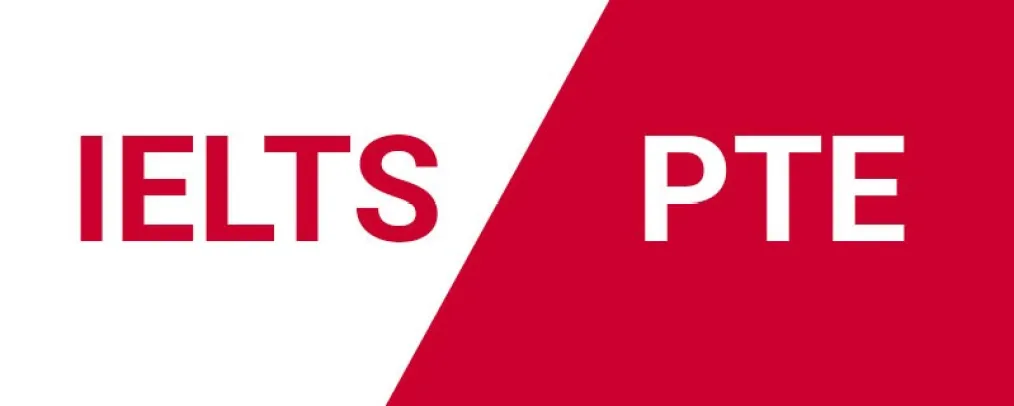Proving your English language proficiency is often a necessary requirement when planning to study abroad, especially if you’re applying to English-speaking countries like the USA, UK, Australia, Canada, or New Zealand. Among the various available English proficiency tests, the Pearson Test of English (PTE) and the International English Language Testing System (IELTS) are two of the most recognized and widely accepted options for international students.
While both tests assess your English skills across key areas, choosing between the two is not always straightforward, as they differ significantly in structure, scoring methodology, delivery format, and test experience.
Understanding the core differences between PTE vs IELTS will help you make an informed decision that plays to your strengths, so you can focus on acing the test and stepping closer to your study abroad dream.
In this article, we’ll provide a side-by-side breakdown of both exams, helping you decide which is better suited for your goals and preferences. Let us first begin with understanding what PTE and IELTS are and how they work.
What Are IELTS and PTE?
- IELTS (International English Language Testing System): Has two versions: Academic and General training, and can be taken on both paper and computer. Covers four sections: Listening, Reading, Writing, and Speaking.
- PTE (Pearson Test of English): A fully computer-based exam that evaluates the four major language skills, Listening, Reading, Writing, and Speaking. AI-based scoring ensures quick results.
Both tests are widely available in multiple locations globally and are conducted quite frequently. They are also accepted by a wide range of Universities around the world. Now that we have a basic understanding of IELTS and PTE Exam, let’s move on to understand the key differences between the two.
PTE vs IELTS: Key Differences
To understand what differentiates PTE and IELTS, refer to the table below, where we list the key differences based on various important features.
| Specifications | PTE | IELTS |
| Test Format | Completely computer-based | Both paper-based & computer-based formats |
| Speaking Section | Recorded via microphone and assessed by AI | Conducted through a video call with an examiner |
| Scoring scale | Scale from 10 to 90 | Band scale of 0 to 9 |
| Duration of test | 2 hours | 2 hours 45 minutes |
| Result turnaround | 5 days | 2 days: computer-based
7 days: Paper-based |
| Global Acceptance | 3,500+ Institutes globally | 11,500+ Institutes globally |
| One Skill Retake | No such benefit | Students can retake individual skills they did not score well on (Only limited to computer-based tests). |
Although these differences clearly distinguish the two tests, your familiarity with technology, the test structure, and speaking format will help you decide which test best fits your needs. Also, verify whether your target university accepts the test you choose. In the next section, take a glance at the difference between test format and timing.
PTE vs IELTS: Difference in Format & Timing
Though both the test similar skills, they differ in terms of format and timing. In the following pointers, we have individually discussed the two tests in terms of how they are designed.
- PTE: It is conducted in three sections, namely Speaking & Writing, Reading, and Listening. The time consumed in attempting each section is:
| Section | Time |
| Speaking & Writing | 54 to 67 minutes |
| Reading | 30 minutes |
| Listening | 30 to 43 minutes |
- IELTS: It is structured differently from PTE as there are 4 sections in the IELTS, namely Listening, Reading, Writing, and Speaking. The time consumed for each section is:
| Section | Time |
| Listening | 30 minutes |
| Reading | 60 minutes |
| Writing | 60 minutes |
| Speaking | 15 minutes |
Moving on, let’s have a look at how the scoring for both tests differs in the following section of the article.
PTE vs IELTS: Difference in Scoring
The exact requirements of the PTE and IELTS tests differ from university to university. But we have a rough estimate of what scores are considered good and accepted by universities in general. Please refer to the table below to know more:
| Proficiency | PTE Score | IELTS Band |
| Expert | 86-90 | 9.0 |
| Very Good | 79-85 | 8.5-8.0 |
| Good | 65-78 | 7.5-7.0 |
| Competent | 50-64 | 6.5-6.0 |
| Modest | 35-49 | 5.5-5.0 |
| Needs improvement | Below 35 | Below 5.0 |
There is no one-size-fits-all answer when it comes to PTE vs IELTS. Both exams are globally recognized and accepted by leading universities, but the better option ultimately depends on your personal preferences and the requirements of your chosen academic institution. Regardless of your choice, enrolling in the right PTE coaching or IELTS preparation program will boost your confidence and improve your performance.


